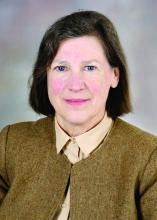In the waning weeks of 2017, still another disaster was added to the long list of natural and man-made tragedies of the year: the derailment of an Amtrak train near Tacoma, Washington. Although the cause of this event has not yet been determined and will not be for at least several months, we do know that safety equipment that has been recommended for years had not been installed in the train. I can only hope that this accident reminds our governmental leaders and institutional officials of the costs in lives and injury of ignoring deteriorating infrastructure and neglecting known safety measures.
Although it cannot lessen the tragedy of suffering experienced by the victims that day, some positive stories of teamwork, courage, and unselfish voluntary action have emerged that deserve mention because of the authentic, spontaneous professional behaviors they represent.An eyewitness and participant in the response to the accident was the Oregon Health & Science University Chair of Neurological Surgery, Nathan Selden, MD, PhD, FACS, who was driving north on Interstate 5 that morning with his 18-year-old son. I spoke recently with Dr. Selden to obtain his first-hand impressions of the experience.
They came upon the scene of the derailment shortly after it had occurred. He recognized immediately the horrifying potential for serious injuries and fatalities. First responders were already arriving on the scene and Dr. Selden offered his services to assist the injured. The first responders eagerly accepted his offer, and he spent the next two hours working with another MD and one RN from nearby Joint Base Lewis-McChord and a large number of EMTs and firefighters mobilized from nearby communities. The team of emergency workers removed almost 80 victims from precariously dangling train cars, provided first aid and basic trauma care, and triaged the victims to the most appropriate next site for treatment. Dr. Selden was most impressed by the courage of the firefighters who climbed into two train cars hanging off the highway overpass. He commented, “They were awesome, working in incredibly risky conditions.”
A pediatric neurosurgeon in his daily work, Dr. Selden is not in the habit of performing the duties that he did that day, but he used his expertise in trauma to assess the victims’ injuries, listing their problems on tags hung around their necks and advising the scene commander about what kind of specialist each patient would likely need. The commander could then direct ambulances to the most appropriate nearby facility for definitive care.
Although most of the hastily assembled emergency response team were strangers to one another, Dr. Selden remarked that “they all worked together efficiently” at a scene that he described as “orderly, purposeful chaos” to stop bleeding, bandage cuts, splint fractures, apply cervical collars, place the injured on backboards, and reassure and calm the victims, who were understandably scared and in shock. Dr. Selden modestly downplayed his role at the scene, and praised the EMTs, firefighters, and police for their leadership and professionalism in organizing and coordinating everyone efficiently and expertly. His comments about the experience focused on the effective way that the caregivers at the scene did their jobs and emphasized how long the road to healing will be for many of the injured. These victims will be in need of support and healing long after the public’s attention has moved on from the drama of that remarkably devastating event. For many of them and their families, he soberly noted, “their lives will be changed forever.” His comments reflect his deep understanding of the implications of the victims’ injuries, many of which involved his area of expertise, neurosurgical trauma.
Few of us will be called on during our careers to step out of our comfort zone to provide emergency care in a situation as far from our normal daily environment as this one was. But if we are, we would do well to follow the lead exemplified by Dr. Selden: call on the basic skills that we as surgeons all possess, work collaboratively with those trained to be first responders and rescuers, and acknowledge the profound and long-lasting effect such a calamity has on all of those who experience it.
Dr. Deveney is professor of surgery and vice chair of education in the department of surgery, Oregon Health & Science University, Portland. She is the coeditor of ACS Surgery News.

